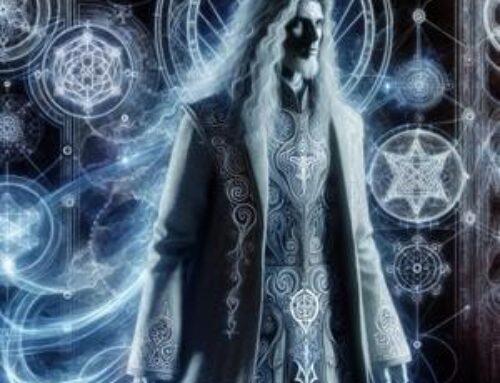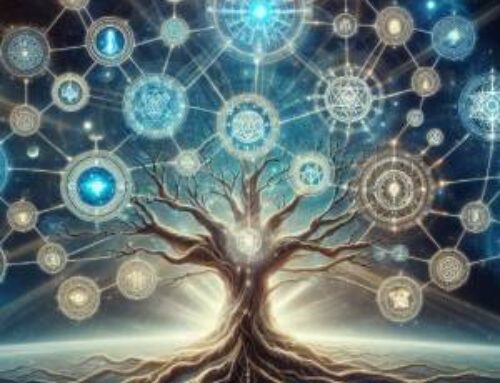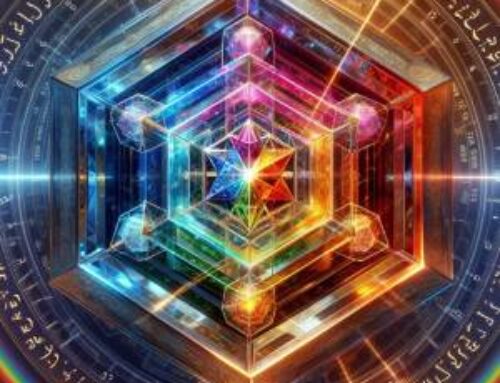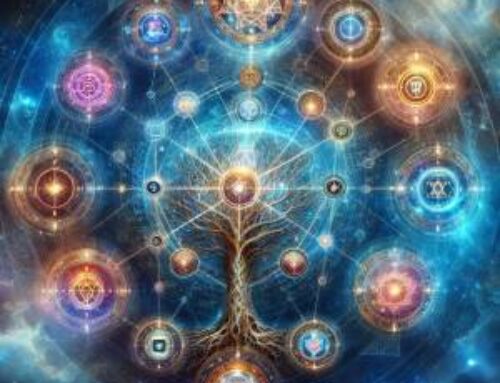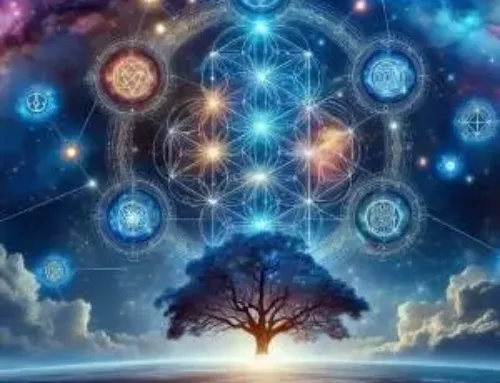Contents
Exploring Kabbalah opens up insights, into the aspects underlying our everyday existence. One intriguing aspect is the idea of Jesus the Kabbalist blending beliefs with Kabbalistic wisdom to create a more intricate understanding. This article delves into this fusion examining how Jesus teachings and deeds can be seen through the lens of Kabbalah enhancing our insight and practice.
It is by the Kabbalah and this alone that all is explained and reconciled. All other doctrines are vivified and made fruitful thereby; it destroys nothing but on the contrary gives reason to all that is (1).
Introduction
While Jesus is primarily recognized as a figure in Christianity delving into His persona from a perspective reveals layers of mystical and hidden meanings that enhance our grasp of His purpose and messages. Kabbalah, a tradition offers a unique perspective for interpreting Jesus life and mission showcasing Him as an enlightened instructor whose wisdom aligns with key Kabbalistic principles.

Kabbalahs intricate framework of the Tree of Life and its sephiroth (spheres) provides a roadmap for growth and change. Jesus words and deeds seem to resonate with this journey indicating an understanding of teachings. For example His descriptions of being “the light of the world” and “the bread of life” mirror symbols and metaphors, in Kabbalah.
These connections indicate that Jesus not comprehended but also embodied the wisdom of Kabbalah leading His followers towards enlightenment. The Spiritual Foundation; Jesus and the Holy Spirit In terms achieving enlightenment or spiritual illumination is often described as receiving the Holy Spirit, known as Ruach HaKodesh. This idea is vividly demonstrated in the life of Jesus.
When He visited the synagogue, in Nazareth He read from the book of Isaiah; “The Spirit of God is upon me for God has anointed me to preach news to the poor; He has sent me to announce freedom for prisoners and recovery of sight for the blind to set free those who are oppressed and to proclaim Gods favor.” He concluded by stating, “Today this passage has been fulfilled in your presence.” This statement emphasizes Jesus anointed position aligning Him with the concept of being filled with essence.
His ability to perform miracles like walking on water is associated with mastering “Stable Intelligence ” symbolized by the Hebrew letter MEM, in Kabbalah. This mastery reflects stability, a characteristic of those who have moved beyond material attachments and rely completely on divine guidance.
Jesus the Kabbalist and the Tree of Life hold importance in teachings. The Tree of Life serves as a roadmap with its ten sephiroth symbolizing facets of God and stages of spiritual growth. Jesus life and teachings align closely with this path guiding individuals, towards Tiphareth, which represents beauty, compassion and divine harmony at its core.
The Sephiroth: Ten emanations represent the process of creation and the nature of the divine, forming a tree of life structure (2).
Within beliefs Tiphareth signifies the embodiment of Christ Consciousness embodying a blend of spiritual and material realms while embracing qualities like compassion and beauty. The crucifixion and resurrection of Jesus can be interpreted as a representation of Tiphareth. The crucifixion reflecting suffering and sacrifice while the resurrection symbolizes spiritual renewal and ascension echoing themes found in Kabbalistic wisdom.
Jesus often emphasized the significance of change in His teachings echoing principles in Kabbalistic traditions. His parables encouraged followers to seek connection within themselves. Mirroring the idea in Kabbalah that ascending the Tree of Life leads to unity, with the divine.The Sermon, on the Mount for example can be seen as a roadmap for leading an spiritually fulfilling life that prepares the soul for understanding and connection with God.
Miracles from a Perspective of Jesus the Kabbalist
Many of Jesus miraculous deeds can be understood through the lens of Kabbalistic symbolism unveiling profound spiritual truths. For instance his act of turning water into wine at the wedding in Cana reflects the transformation described in Kabbalah where ordinary elements are changed into essence. This symbolizes the potential for growth and spiritual evolution within all believers.
Likewise Jesus acts of healing align with beliefs about energy flowing through a healer to restore balance and peace. In Kabbalah healing is not just physical but addresses alignment and removing obstacles that hinder divine energy flow. Jesus the Kabbalist ability to heal the sick and bring back life illustrates his mastery over these principles showcasing his role, as a healer and teacher.
Viewing Ethical Lessons Through a Kabbalistic Lens
Jesus moral teachings those centered on love, forgiveness and humility echo closely with values found in Kabbalah. According to Kabbalah teachings genuine spiritual progress involves refining ones ethics and embodying virtues that mirror qualities.
Jesus the Kabbalist focused on the importance of showing love to others forgiving them and embracing humility, which resonates with the belief, in spiritual growth. The idea of Tzedakah (charity) in Kabbalah mirrors Jesus teachings on helping the less fortunate and offering assistance to those in need. It goes beyond giving material possessions. Also encompasses spiritual generosity reflecting the divine quality of Chesed (loving kindness). Jesus embodied this principle by reaching out to marginalized individuals showing compassion and providing support to those facing challenges.
In summary examining Jesus the Kabbalist through the perspective enhances our comprehension of His teachings and deeds presenting a fusion of mystical traditions. His life serves as a model for following the journey towards elevation, moral development and unity with the divine guiding believers towards profound spiritual realization. By exploring these connections we not develop a respect, for Jesus wisdom but also for the timeless truths found in Kabbalistic heritage (3).
The Hermetic Academy invites you to delve into these teachings by exploring mystical paths that lead to heightened spiritual enlightenment. Join us in uncovering wisdom that connects practices and illuminates the route to divine understanding.
This community of light has existed since the first day of the creation of the world, and it will continue until the last day of time (4).
FAQ- Jesus the Kabbalist
1. How does Jesus the Kabbalist interpret miracles?
A: Kabbalah explains that Jesus miracles demonstrate His control, over laws and principles symbolizing spiritual truths and showcasing His connection with divine energy. These acts reveal the potential for growth and transformation for all believers.
Regarding Tiphareth in relation to Jesus this sphere represents beauty and compassion on the Tree of Life symbolizing a balance between the material realms. Jesus crucifixion and resurrection embody the essence of Tiphareth by illustrating a path of suffering, sacrifice and ultimate spiritual renewal.
Jesus ethical teachings align with principles through his emphasis on love, forgiveness and humility which resonate with values of refinement and spiritual purification in Kabbalah. His teachings mirror attributes like loving kindness (Chesed) and charity (Tzedakah) guiding followers towards growth and ethical development.
In Kabbalah, Ruach HaKodesh (the Holy Spirit) signifies enlightenment and divine inspiration. When Jesus declared the fulfillment of Isaiahs prophecy in the Nazareth synagogue it signaled His anointment and alignment, with this spirit.
How does Kabbalah interpret the act of Jesus turning water into wine? This miracle is viewed as a representation of cleansing and transcendence akin, to the alchemical process. It symbolizes the transformation of elements into an essence showcasing the potential for inner growth within all believers.
In todays context individuals can explore teachings through programs like those offered by the Hermetic Academy. These structured courses combine learning with exercises like meditation, prayer and rituals. Embracing these teachings can lead to enhanced awareness and a deeper connection, to knowledge.
References:
(1) Eliphas, L. (1854). Dogme et Rituel de la Haute Magie. Paris.
(2) Mathers, S. L. M. (1887). The Kabbalah Unveiled. London.
(3) Rubenstein, E. (2020). The Tree of Life: The Kabbalah of Immortality. Hermetic World, Paphos.
(4) Eckartshausen, Karl von. (1802). Die Wolke über dem Heiligtum. München.

